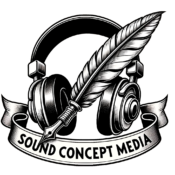When you’re starting a podcast, one of the most crucial steps in the creation process is defining your show structure and format. This foundational blueprint will guide you in producing a podcast that’s not just engaging but also consistent and recognizable to your audience. Let’s dive into the essentials of setting up your podcast’s structure and format for a smooth, successful launch.
Understanding Show Structure
The structure of your podcast is the skeleton that supports every episode you create. It includes elements like the introduction, segments, transitions, interviews, and conclusions. A solid structure keeps you organized and ensures your podcast flows logically from one segment to the next.
The Art of Choosing a Format
The format is how your content is delivered. It could be conversational, narrative, educational, or a mix. Your choice of format will dictate how you interact with your audience and how they experience your content.
Step-by-Step Guide to Defining Your Show Structure & Format
1. Set Your Goals
What do you want to achieve with your podcast? Your goals will influence your format—whether it’s to educate, entertain, inspire, or inform.
2. Know Your Audience
Understand the preferences of your target audience. What do they enjoy listening to? How much time do they typically have for an episode? Tailor your structure to fit into your audience’s lifestyle.
3. Decide on Episode Length
There’s no one-size-fits-all length for podcast episodes. Consider your topic, format, and audience when deciding. Remember, consistency is key, so once you choose a length, try to stick to it.
4. Define Segments
Segments are the building blocks of your podcast’s structure. They can include an intro, main content, guest interviews, Q&As, and outros. Consistent segments across episodes make your podcast predictable in a good way.
5. Craft Your Intro and Outro
Your intro should capture attention and set the stage for the episode, while your outro should summarize key points and include a call to action or tease the next episode.
6. Choose a Format
Will your podcast be narrative with a single voice weaving stories, or will it be conversational with back-and-forth dialogue? Perhaps a panel discussion or an interview format suits your style better. Pick one that aligns with your content and personality.
7. Plan Your Content Flow
How will you transition between segments? Will you use music, sound effects, or a simple pause? Smooth transitions keep listeners engaged.
8. Integrate Audience Interaction
Consider how you’ll involve your listeners. Will you have mailbag segments, social media shout-outs, or live call-ins?
9. Test Your Structure
Before you settle on a structure, do a test run. Record a pilot episode to see how the format feels and flows. Adjust as needed based on feedback and your own intuition.
10. Keep It Flexible
While consistency is important, allow room for evolution. Your podcast structure isn’t set in stone. As your show grows, so might your format and structure.
Conclusion
Defining your show structure and format is like preparing a great meal; it requires the right ingredients, a good recipe, and the flexibility to adjust seasoning as you go. With thoughtful planning and an understanding of these elements, you’ll be well on your way to podcasting success.
But remember, every great show needs a skilled chef behind the scenes. That’s where Sound Concept Media steps in.
With years of experience in audio storytelling and podcast production, we can help refine your vision and turn it into an audible reality. Whether you’re stuck on structuring your pilot episode or need a seasoned ear to perfect your format, we’re here to guide you through the process.
Ready to start your podcasting journey with a clear plan? Contact Sound Concept Media today, and let’s create a podcast that stands out from the very first note.

